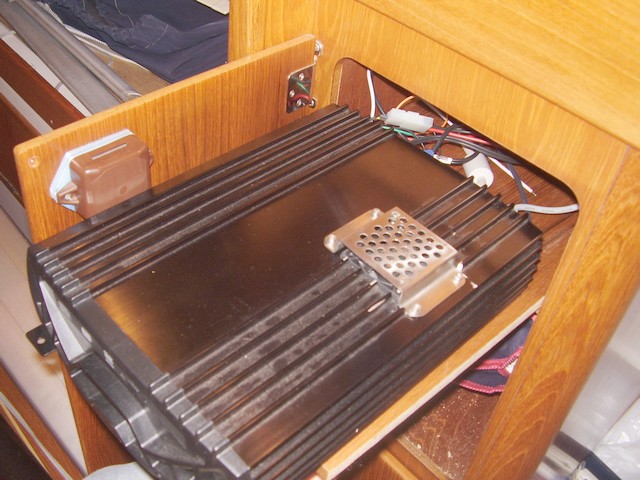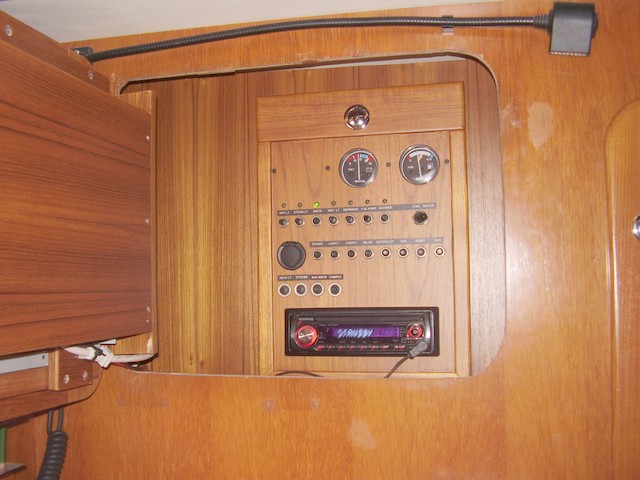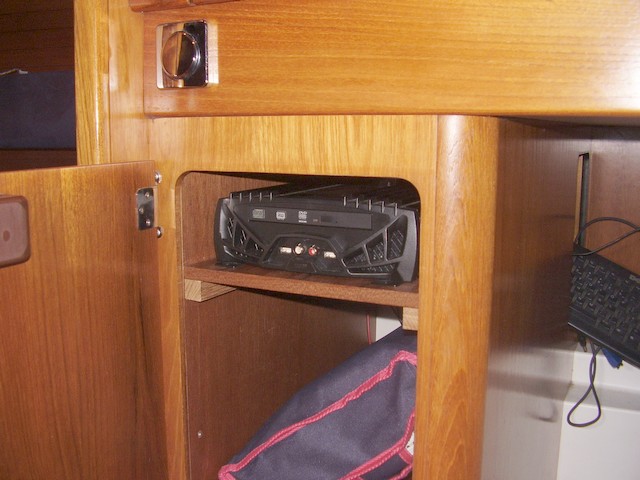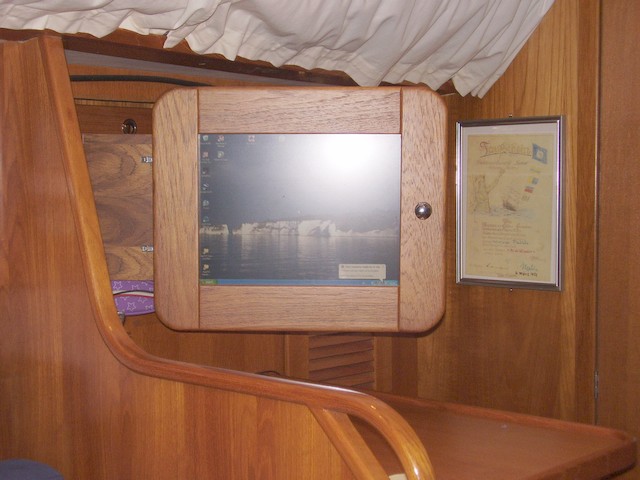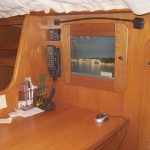Boat PC on our Maxi 1000 – Navigation, AIS, Weather, emails and TV
I like to keep things simple on the boat as everybody can operate simple things and they tend not to fail in the wrong moment but over the years the laptop started to become a constant companion on longer trips. Initially just to be able to get a weather forcast from the Internet but later I added a NASA AIS receiver for safer Channel crossings and soon things started to get complicated. Not because of the technical solution but there was no safe place for the laptop to be kept while sailing, hence it was not much use with the AIS in more than very light winds.
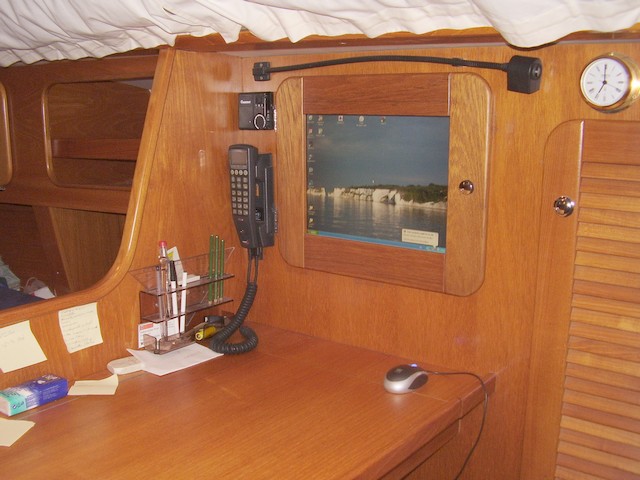
The dilema I got into was that I was not prepared to spend all the money on a chart plotter and electronics charts if I would still use paper for everyday navigation and that I liked the additonal benefits a laptop/PC has over a plotter, like Internet, iTunes, DVDs for the kids etc. The solution seemed to find a home for the laptop that would be safe, the screen being viewable while the keyboard is protected – who want’s to go down in his oilies and flood the laptop.
Soon I found myself scanning the internet on Car PC options and TFT screens as I couldn’t come up with a good solution for the laptop that would not involve a separate screen and I learned that laptops are quite power hungry. I did also look at those boat PC packages that are on offer but found these too expensive and not surprisingly the components used look exactly like those on the Car PC websites.
I was becoming clear that the Car PC would be the way to go but I still had no solution for the monitor problem, which basically had to fulfill a dual role in navigation and entertainment. Eventually I discussed my problem with a friend, who has nothing to do with boating, in fact he has never been on our boat, nor PCs but is generally a very hands-on and practical guy. Tossing over various options we finally landed on a design that would fit the screen into the space of the electrical panel in a door frame as the electrical panel would have to go behind the screen. To also meet the entertainment needs we decided to mount the screen and frame on a pull-out mechanism that would allow it to be pulled out when opened and therefore viewable from the saloon.
The only problem left was what screen to use, so it was back to the Internet to search for TFT panels. There are really nice and thin models on the market but they are not coming cheap, so I finally settled on buying a 2nd hand 15″ TFT on eBay. To avoid power problems I choose a model with an external power supply as these basically require 12V input power. As soon as it arrived it was taken apart to get to the panel and electronics in order to get the meassurements for the new door and start the woodworking.
Having used the new PC now for a season everybody in the family is pleased to have it on board and it got quite a bit of use other than navigation. The only remaining problem to fix this winter is cooling/ventilation as it is getting too hot in the cupboard the PC is mounted in.
Here are some more technical information on the PC:
– mainboard: I have choosen a mini-ITX format and was looking for a model from VIA. My local hardware guy suggested a simple board from Intel as it costs only a third of the VIA one. Performance of both boards is indentical but VIA has a lower power consumption
– harddrive: standard 80 GB laptop drive
– CD/DVD: standard slim line drive
– memory: 1GB
– power supply: The Car PC market is offering a number of options that supply stable output power over a range of input voltages around 12V. I choose the M2-ATX power board, as it has enough output to power the PC and screen and it does fit into the Voom PC 2 case.
– case: I choose the Voom PC 2 model, which is specially designed for the Car PC market. There is plenty to choose from and my selection criteria was size plus I wanted to be able to fit the power supply into the case. Most cases come with 220V power supply build in but obviously that’s no use on the boat.
Assembling the components was easy, the only problem I ran into was the cooling. The cooling fans build into the case where far too noisy – okay in a car with the engine running but not on a boat enjoying the tranquility of a nice anchorage. The resolution was to take the fans out and cut a whole into the casing to fit a larger fan just above the processor. By design the larger fan is quieter and having the airflow just where it is need allows to run it at lower revs.
For anybody interest I recommend to look at www.mini-itx.com.
Software:
– I choose SeaClear II for navigation as it is freeware and supports AIS. I had this on my laptop before and it is easy to use and reliable. All other packages charge a premium to enable the AIS interface.
– SeaTTY allows me to link my PC with a shortwave radio to receive weather data, weatherfax and Navtex. It is available on the Internet and the developer is asking for a small fee. The software is working well, the only thing I have not been able to receive is Navtex but I think that is a problem with my antenna rather than the software.
– Standard MS Windows
– iTunes and DVD software
I connect to the Internet over my mobile phone. Nokia has a software package for download that is managing the connection. All that is required is a USB cable to connect the PC to the mobile.
We do not use WIFI as only few marinas offer free WIFI but obviously there are many USB based WIFI adaptors on the market that can be easily plugged in.
This detailed and well engineered solution kindly presented by Maxi Owners member, Sven Pahnke of Hamburg